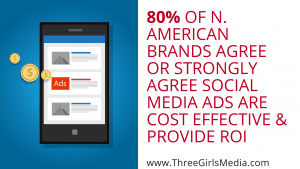As you consider your business’ marketing, where do you put your focus? If it isn’t on content marketing, it may be time to rethink your strategy.
According to a year-long study from Skyword that focused on the highest performers (referred to as Visionaries and Leaders), “Content isn’t one of the things that marketing does, but the central thing around which marketing is organized.” In fact, the data showed that 87 percent of Visionaries and 81 percent of Leaders put content creation at the core of their organization’s marketing efforts.
The study also revealed that businesses just beginning to invest in content marketing added it on to what they’re already doing, rather than putting in the resources to do it successfully. In fact, companies with the most effective content marketing strategies aren’t just making it up as they go. They are very strategic about it, making content creation the core of their strategy.
How can you be sure your business is approaching content marketing in the correct way? Rather than only focusing on social media or blogging, it’s important to take a comprehensive approach that combines multiple tactics in a variety of ways.
Here are four of the core content marketing approaches your brand needs to be investing in.
1. Your Website as an Integral Part of Your Content Marketing Strategy
When it comes to your business’ content, your website is the hub. The whole point is to get consumers to visit your website, see how great your company is, and purchase your products or services.
But to be effective you need to set your website up correctly. While it doesn’t need to be complex, it does need to be strategic. As you design your site, think about your target consumer. How can you showcase your brand clearly and compellingly?
Basic Website Set Up
At the bare minimum, make sure your website includes these details:
- Your purpose
- Products and services you provide
- How you’re different from competitors
- Contact information
- Client testimonials
- A blog
As you design your website, use consistent formatting, fonts and colors. Also remember that research shows colored visuals increase users’ willingness to read a piece of content by 80 percent, so use crisp, high-quality, brand-related images and videos throughout your website.
An Overview of SEO
Of course, the way your website looks to the visitor isn’t all you need to think about; it’s also important to consider how consumers will find your site. Effective search engine optimization (SEO) is key.
Before writing website copy, research keywords relevant to your business. What will consumers type into Google when they’re looking for a company like yours? As you write your website text, slip in keywords in a natural way; aim for using them about once every 100 words or so.
Other key components of your website’s SEO include:
- SEO Titles and Meta Descriptions: Make sure they’re filled out strategically on each and every page.
- Subheads: In addition to breaking up the text to make it easier for visitors to consume the page’s content quickly, using a keyword in them can increase your SEO.
- Images: Save the photos you use on your website with a keyword in the file name. When it’s appropriate to add a caption, use one with a keyword in it that will also make sense to the website visitor.
Using Your Blog for Ongoing Content Marketing
Your business’ blog is a key component of successful content marketing. According to Hubspot, more than half of marketers (53 percent) say blog creation is their top inbound marketing priority.
Fit Small Business also reports:
- More than 409 million people read 23.7 billion pages every month.
- 6 out of 10 online marketers believe they’ve gained customers through blogging.
- Users consider blogs a credible source of information.
- 6 out of 10 U.S. online consumers have made a purchase based on recommendations from a blog.
- Marketers who prioritize blogging are 13 times more likely to see positive return on investment (ROI).
Clearly, blogging is worth the investment and integral to content marketing success. But it’s important you do it well, too. The Skyword study I referenced at the beginning of this post revealed that 100 percent of Visionaries and 96 percent of Leaders use a content or editorial calendar. Clearly, proper planning is vital to a successful blogging strategy.
Planning ahead can also help your business’ blog be perceived as more credible by consumers, too. According to Social Marketing Writing, the five most important factors of a credible blog are:
- Quality content
- Good design
- Regular publishing
- Established social media presence (another tactic we’ll discuss!)
- Strong writers
Investing in a blog isn’t enough for effective content marketing. It needs to be updated regularly with helpful, well-written articles on a website that has an appealing, professional design.
2. Using Social Media in Your Content Marketing Strategy
As Social Marketing Writing pointed out above, an established social media presence gives your business credibility in the eyes of consumers. Other research backs this up, too.
According to Hubspot:
- 92 percent of marketers say that social media is important to their business.
- 90 percent of all marketers indicated that their social media efforts have generated more exposure for their businesses.
- More than half of marketers who’ve been using social media for at least two years report it helped them improve sales.
CoSchedule also points out, “88 percent of business are using social media…if you aren’t, it’s more likely than not that your competitor is. Don’t let them steal your customers!”
How do you make sure your social media presence is an effective piece of your overall content marketing strategy?
Invest in an Organic Social Media Presence
Although social media ads are effective (which we’ll discuss soon), it’s important to have a non-paid, or organic, presence as well. I go into more detail in this post about the continued relevance of organic social media, but the main points are:
- It’s Cost-Effective
- It Provides Authenticity
- It Compliments Advertising
- It Fosters Your Creative Voice
- It Provides a Forum for Customer Care
- It Builds Engaged Communities More Effectively
- It Helps Search Engine Optimization
Start by deciding which platforms you’ll integrate into your content marketing strategy. Think about which social media networks your target audience uses most often; if you have the capacity for it, invest in the top two to three platforms, although even just managing one social media presence well is effective if it’s the right website.
Once you’ve decided where you’ll put your focus, create a plan. Just like blogging, effective social media management begins with a strategy. How often will you publish updates? What types of content will you share? This is a fantastic place to promote your blog posts. Craft updates that tell followers why they need to read them and provide direct links to the articles.
Remember, social media is about being social. Use your channels to connect with followers; ask them questions, respond to their comments or messages in a timely fashion, and use the platform to show them the human side of your brand.
Investing in Social Media Advertising
While your organic social media presence is important, in this day and age social advertising is also key to a successful content marketing strategy.
CoSchedule reveals:
- 49 percent of 18-29 year olds have purchased something they saw in a social media ad.
- 26 percent of Facebook users who click on an ad make a purchase.
In addition, LinkedIn’s Marketing Solutions blog shares, “80 percent of North American brands agree or strongly agree that social media advertising is cost effective and provides ROI.”
As social media platforms continue to change their algorithms, integrating social ads into your content marketing strategy becomes even more important.
3. Using Email in Your Content Marketing Strategy
Email marketing continues to be an effective tactic to include in a successful content marketing strategy.
- Statista reports there were 3.7 billion email users in 2017, and it’s projected to grow to 4.3 billion by 2022.
- According to eMarketer, email had a median ROI of 122 percent. This is four times higher than social media, direct mail and paid search marketing formats.
- Marketing Sherpa reports 86 percent of consumers would like to receive promotional emails from companies they do business with at least monthly and 61 percent would like to receive them weekly.
E-newsletters are also an effective way to reiterate your overarching content marketing messages. Feature recent blog posts, upcoming promotions, or special discounts or coupons. Put together an email editorial calendar that integrates with your blogging and social content calendars so you can cross-promote the same messages directly to subscribers’ inboxes.
Effective email marketing also includes components like segmentation, personalization and automation. These become even more important to success in certain industries, such as ecommerce. Many email marketing platforms (e.g. MailChimp) will provide options for automated messages, such as welcoming new users to the email list or abandoned online shopping carts.
Regardless of your industry, keep these elements in mind as you plan your email strategy for the best results.
4. Using Visuals in Your Content Marketing Strategy
While ‘using visuals’ isn’t a stand-alone content marketing tactic, it’s become relevant enough to a successful campaign that I wanted to draw attention to it.
Incorporating compelling, well-designed visuals into your strategy is vital to content creation success. Here’s what the research shows:
According to Jeff Bullas:
- Articles with images get 94 percent more views.
- Studies have shown that people can recall 65 percent of the visual content that they see almost three days later, in comparison to about 10 percent of written content three days after it’s read.
- People follow visual instructions 323 percent better than written instructions.
- You get 37 percent higher engagement on Facebook if you use a visual.
- Twitter updates with visuals are retweeted 1.5 times more than those without.
According to Hubspot:
- Researchers found that colored visuals increase people’s willingness to read a piece of content by 80 percent.
- Articles with an image once every 75-100 words got double the number of social shares than articles with fewer images.
- Visual content is 40 times more likely to get shared on social media than other types of content.
As you plan out your content marketing strategy, include high quality, compelling visuals throughout each tactic, from your website pages and blog posts to your social media updates and email newsletters.
But what if you aren’t a graphic designer? No problem! There are all sorts of cost-effective tools out there that you can use to create custom images and videos for the specific piece of content you’re creating.
A word of caution: Make sure you have the right to use any image before using it in your content marketing campaign. You can read how to avoid copyright infringement in this article.
Getting Started with Your Content Marketing Campaign
It’s clear that content marketing is an effective strategy to invest in; it’s also evident that to be successful you need to manage your content well.
As you plan your campaign, think about the overall content structure you’ve developed through your website, blog posts, organic social media updates, social media ads, e-newsletter and visuals. There are a lot of moving parts, but with proper planning and execution, it can make a big difference for your business!
Do you need help getting started or have questions about content marketing? Contact us for a complimentary 30-minute consultation and check out these additional articles for more helpful advice:
- Hot Trends in Content Marketing You Need to Know About
- Content Marketing: How to Use It for Success
- The Goldilocks Approach to Content Marketing Expectations
Special Offer:
Sign up for a complimentary consultation during December and receive an Annual Marketing Planning Guide valued at $475! We offer a 30-minute phone consultation with our CEO, and can answer your questions and discuss your specific marketing needs - no strings attached. Call 408-218-2391 or contact us today to arrange your consultation!








